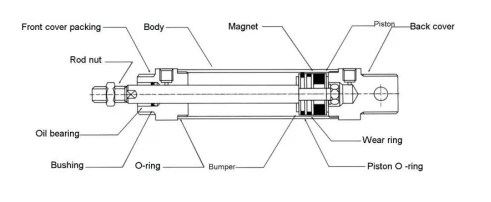To ensure precise control over the complex Hot rolling process, advanced control systems like Proportional-Integral-Derivative (PID) control are employed. In this article, we will dive into the process of implementing PID control in a hot rolling mill, exploring its key features and benefits.
What is PID Control?
PID control is a widely used feedback control mechanism that aims to regulate a system’s output by continuously monitoring and adjusting the input parameters. It consists of three main components: Proportional (P), Integral (I), and Derivative (D). The Proportional component generates a control signal proportional to the error between the desired setpoint and the actual output. It provides an initial response to correct any deviations but may not eliminate steady-state errors.The Integral component integrates the accumulated error over time, effectively reducing steady-state errors. It continuously corrects the system’s output based on the history of error.The Derivative component predicts future trends of the error by analyzing its rate of change. It helps in providing a rapid response to sudden changes and damping out oscillations.
To implement PID control in a hot rolling mill, several steps need to be followed:
Step 1: System Identification
Before applying PID control, it is crucial to identify the dynamics and characteristics of the rolling mill. This involves collecting data, analyzing the system’s response to various inputs, and estimating the transfer function.
Step 2: Tuning the PID Parameters
The effectiveness of PID control heavily relies on the optimal tuning of its parameters. The proportional gain, integral gain, and derivative gain need to be adjusted to achieve the desired system response. This tuning process can be done through manual trial and error or by utilizing advanced optimization algorithms.
Step 3: Programming the Control Algorithm
Once the PID parameters are determined, the control algorithm needs to be programmed into the rolling mill’s control system. This involves integrating the PID equations with the mill’s software and hardware components.
Step 4: Testing and Validation
After the control algorithm is implemented, extensive testing and validation are necessary to ensure its smooth operation. This includes testing the system’s response to various scenarios, such as load changes and disturbances, and assessing the quality of control achieved.
Step 5: Continuous Monitoring and Fine-Tuning
PID control is not a one-time implementation process. Continuous monitoring of the mill’s performance is crucial to detect any deviations or inefficiencies. Fine-tuning of the PID parameters may be necessary to adapt to changing operating conditions and to optimize the system’s overall performance.
Benefits of PID Control in Hot Rolling Mill
Implementing PID control in a hot rolling mill offers numerous advantages:
Improved Product Quality: PID control enables precise control over various mill parameters, resulting in consistent product quality and dimensional accuracy.
Increased Efficiency: By maintaining optimal process conditions, PID control minimizes energy wastage, reduces material scrap, and enhances overall production efficiency.
Reduced Maintenance Costs: PID control helps in preventing mechanical stress and excessive wear on the rolling mill’s components, resulting in reduced maintenance and repair costs.
Faster Response to Process Changes: With the ability to react rapidly to process variations, PID control ensures timely adjustments, preventing quality issues and production delays.
Enhanced Safety: PID control can incorporate advanced safety features, such as temperature monitoring and emergency shut-off systems, ensuring safe operation and minimizing the risk of accidents.
In conclusion: PID control plays a critical role in achieving precise control and optimization of hot rolling mills. By implementing this advanced control mechanism, steel manufacturers can enhance product quality, increase efficiency, and reduce maintenance costs, ultimately contributing to their overall success in the industry. So, when it comes to hot rolling mills, PID control is undoubtedly a game-changer.



